is it kind? ICoD announces international design day 2024 theme

15.01.2024 ICoD news
What if designers first asked, is it kind? What if the measure of design was how well it cared for people and their relationships rather than how profitable it was? This year's International Design Day theme is about building kindness into design practice and features an international forum produced by ICoD Member Lithuanian Design Association (LDA).
The theme is it kind? proposes a new metric of design kindness: the kindness standard. And defines what kind design is. This year we ask Members how they are designing to transform current systems into possibilities to design with kindness — to ensure a kinder future for all. Read on to learn about the theme and the LDA is it kind? Forum.
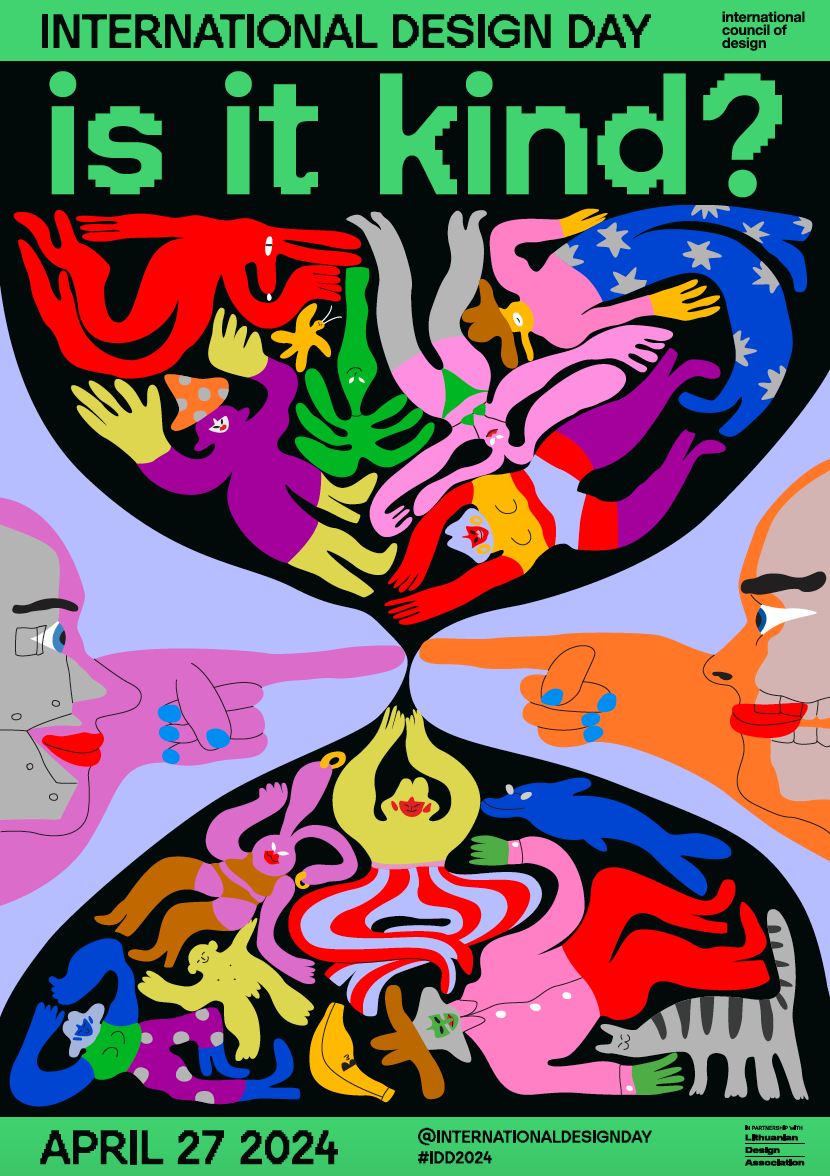 The IDD2024 visuals were designed by the illustrator Egle Zvirblyte and produced by Taktika Studio.
The IDD2024 visuals were designed by the illustrator Egle Zvirblyte and produced by Taktika Studio.
WHY IS KINDNESS SO HARD TO DESIGN WITH?
Kindness is inherent to human beings. Humans are born with a great capacity to feel compassion and care for others, ethics and principles that include humility, respect, empathy, reciprocity, and love, among others. Kindness is also a quality of attentiveness to the relationships that surround us and define who we are. It can help to create a sense of harmony and peace in each and all of our worlds. And yet, we are at a tipping point in the history of the world, where harmony through kindness can feel impossible. Unsurpassed technological innovation and scaled possibility also bring social inequity, political and environmental unrest. Both advances and mistakes have been made and as we imagine and design these worlds we must also account for systems that have created unjust sets and systems of relationships that are difficult to untangle.
We have many metrics by which to judge the value of a design. Will it sell well? Is it sustainable? Is it innovative? Culturally relevant? But we don’t always have the reflex to ask ourselves … does this design make the world (even a little) better? Does it make us happier?
We think that we should be asking ourselves these questions. In a world where market success can be at odds with social equity, human health and even the user’s own well-being, we need a new barometer for success: care for the people being impacted by the designs. Before adding anything new to the world, every designer should be asking themselves: is it kind?
THE KINDNESS STANDARD
(developing metrics for kindness)
What if design was measured by how kind the design is to the world? How much care you have, not only for the people using the design, but for the people extracting the raw materials, manufacturing the products, for the people living near the factories and for the environment that people need to live in? What if design was considered in terms of whether the design is ethical and good and improves the world in some way or whether it is unkind in small or large ways? Is it compassionate to the suffering of the people involved in the value chain that creates it?
Developing a metric for kindness and building kindness into design practice means:
Reconfiguring the value and metrics of design. If your metric is money and you are creating things that are at the expense of the well-being of people, this is not valuable design. What about inventing a measure of design based on what kind of relations and ethics it generates? How much, and what quality of care shapes the design, shifts the economic model of creating desire (and making more ‘stuff’ and money) to consider instead of pressing questions of fairness: Who is being considered and who is left out? Whose future will be affected, and how? How much harmony does this design generate now and in future? What kind of world does this design uphold/imagine anew?
For International Design Day, we want to go a step further. It is not enough to simply meet the criteria for not being ‘bad’, we want to see a world where design strives to be kind, generous and caring. By having standards for ourselves that exceed regulatory standards, by introducing wonder and beauty into the user experience and by showing care not only for the consumers of our products but also for all those who are in the value chain and impacted by the design.
What if designing with care and compassion is exciting, meaningful and desirable?
DEFINING KIND DESIGN
When we ask, is it kind? how do we define kindness in the design? How do we build kindness into our design practice?
Defining kind design and building kindness into design practice means:
Centering humanity. This means focusing on the good of the users, those affected by the design, and also the society that surrounds them. This is a concept we have brought up many times before (see the Professional Code of Conduct) This means centering the design process — and the way we measure its success — on the impacts that the designing has on the well-being of the society that is affected by the design using designers’ capacity for compassion and care. It is key to make a distinction between the user and the non-user who may be affected by the design.
Building plurality. Kind design can be participatory, socially oriented, and open-ended. In this plural model, the designer could be thought of as a facilitator who makes space for ethnographic, participatory and collaborative practices to intersect. “A world of many worlds” (Fourth Declaration of the Lacandon Jungle 1996) considers how divergent knowledges and practices make worlds in order to arrive at something plural, “a world in which many worlds fit”. Allowing different worlds to be alongside of one another is a mindset that can inform design practice. In such a reciprocal relationship, designs can be independent but also nested within a set of different design configurations. This includes not only differences in design practices between peoples from different places in the world, but an openness to collaborating across a plurality of fields and experts when considering how to solve a situated design problem.
“Being in good relation” is a concept put forth by Dakota scholar Kim Tallbear (2019) that involves understanding the interdependence of all living things — including all human and other-than-human worlds. All humans share difference and sameness in relationship to their environments, to the land, water, animals and their human communities and material realities. As part of their process, designers can be attentive to these relations as a kind of vast network of entangled effects. Importantly, those most affected by the design probably hold the clearest, most ethical and principled path forward, and should be consulted first. Building alternate networks of relations based in kindness is part of it.
Getting inspired by the legal model of a duty of care. In legal terminology, a duty of care is a legal obligation requiring individuals to adhere to a standard of reasonable care to avoid careless acts that cause harm (whether visible now, in the present, or future, as a material inheritance). Kind designing as a standard of care means looking ahead to assess the foreseeable outcomes of what is being designed, and ensuring that care shapes all steps of the design, who is affected, and what consequences might arise, well into the future.
Designing with kindness as a measure of value works to challenge existing systems and the pressures to design for profit. And then transform these into possibilities to build new kinds of relationships, and a new measure of design that ensures a future that is socially equitable, environmentally sustainable, culturally diverse and economically viable.
Design with kindness at its core — is it kind? — follows these ethics and principles.
LITHUANIAN DESIGN ASSOCIATION IDD EVENT
For updated information on the LDA forum and conference see International Lithuanian Design Day 2024
Following the theme, ICoD Member Lithuanian Design Association (LDA), this year's partner for International Design Day 2024, will host its own event: a local conference broadcast online through livestream in which speakers from social, philosophical and biological fields will respond to the design-provoking question ‘is it kind?' and share their views and tools to enable designers to have more conscious processes.
LDA invites design organisations, collective initiatives and design communities to ignite a conversation with other fields around the design-provoking question is it kind?. They propose creating an event which can take any format, such as interviews, conferences, conversations broadcast through social media, in-person meetings, discussions, seminars and creative workshops. Their interpretation of the theme is as follows:
Design and designs have many ways of interacting with people. Instead of designers talking about design, we ask designers to invite guests from outside of the design profession to give their take on building kindness into design practice. We are talking about philosophers, researchers, anthropologists, sociologists, psychologists, biologists (and more!) whose distinct approaches, methodologies and tools might be used directly, or adapted to design processes. How do other professionals learn about, include and measure humanity and the environment? How might we cross-pollinate knowledge bases, better understand the challenges designers face, the wider impact of design decisions, and develop more ethical and inclusive design processes?
Stay tuned to the International Council of Design and International Design Day channels for more details!
__
The IDD2024 visuals were designed by the illustrator Egle Zvirblyte and produced by Taktika Studio.

Egle Zvirblyte is a multidisciplinary artist from Lithuania. Born and raised in Vilnius, she studied Film and Spatial design in London, and spent most of her creative professional life in the UK, Australia, Asia and Spain. Egle works on branding, advertising and product design projects as an illustrator for clients such as Google, Apple, Nike, Adidas, Mailchimp, as well as actively exhibiting worldwide, and is known for her murals and inflatable installations.
Egle Zvirblyte: eglezvirblyte.com

Taktika Studio is a design practice by Nerijus Keblys and Mantas Rimkus. Though it is a two-person studio, their creative field is very broad, from cultural identities to wayfinding designs. Taktika is recognized and awarded. Designers willingly get out of the traditional frames of graphic design, so their work is never limited to the conventional disciplines and forms. They always dig deep into the task and find the most suitable form. Nerijus and Mantas also curious for new challenges, that is why they often invite or are invited by other creators for collaboration which results in an authentic result. In any case, Taktika Studio's design is based on deep insights, their design language is bold, always built on good understanding and solid insights.
Taktika Studio: https://www.instagram.com/taktika.studio/
This year's theme for ICoD International Design Day (IDD 2024) is in honour of the legacy of the humanitarian designer Rob L. Peters, who once said, "What if we all decided to be a little kinder than necessary? What a gift to pass on."
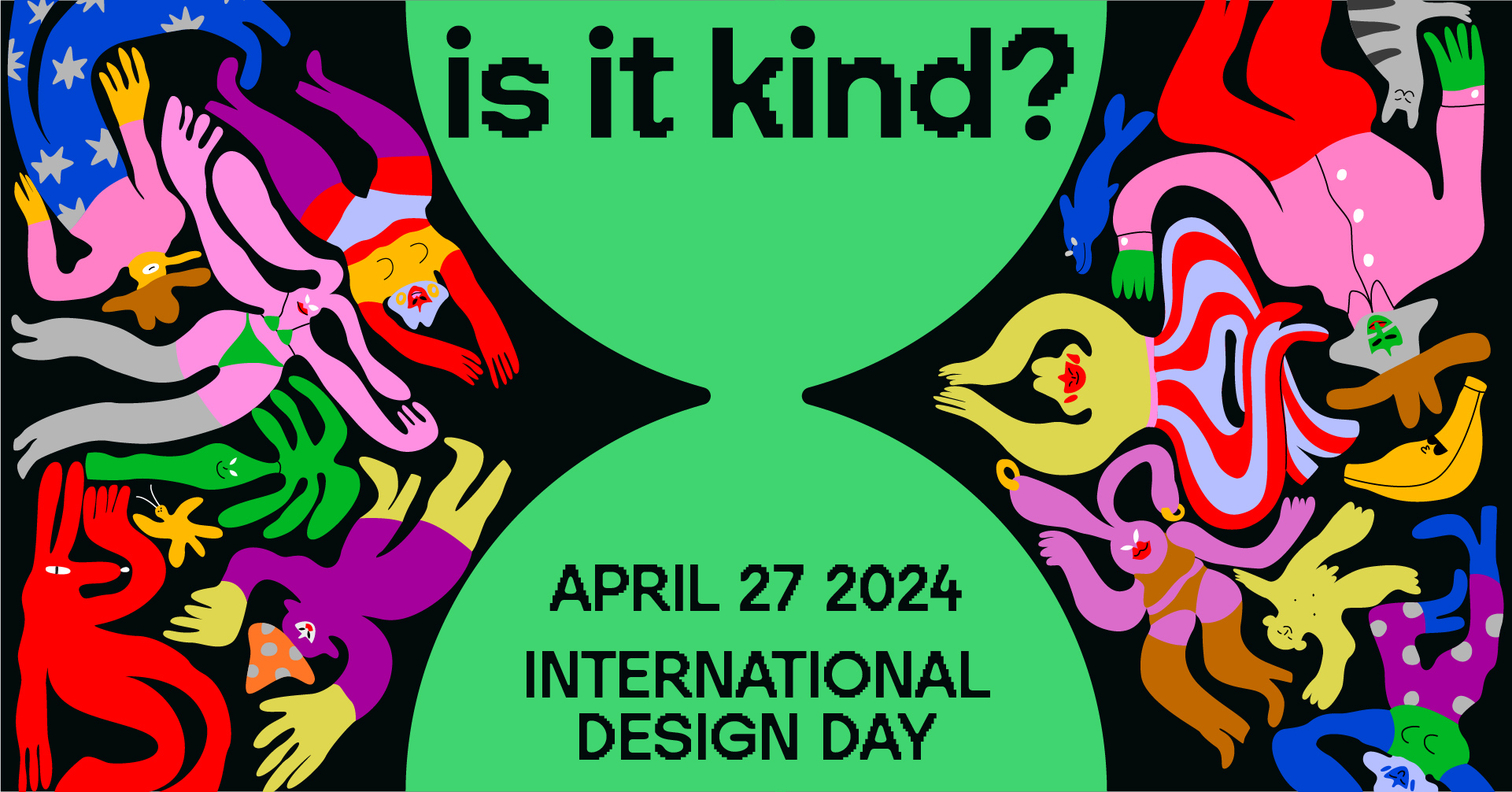
relatedarticles
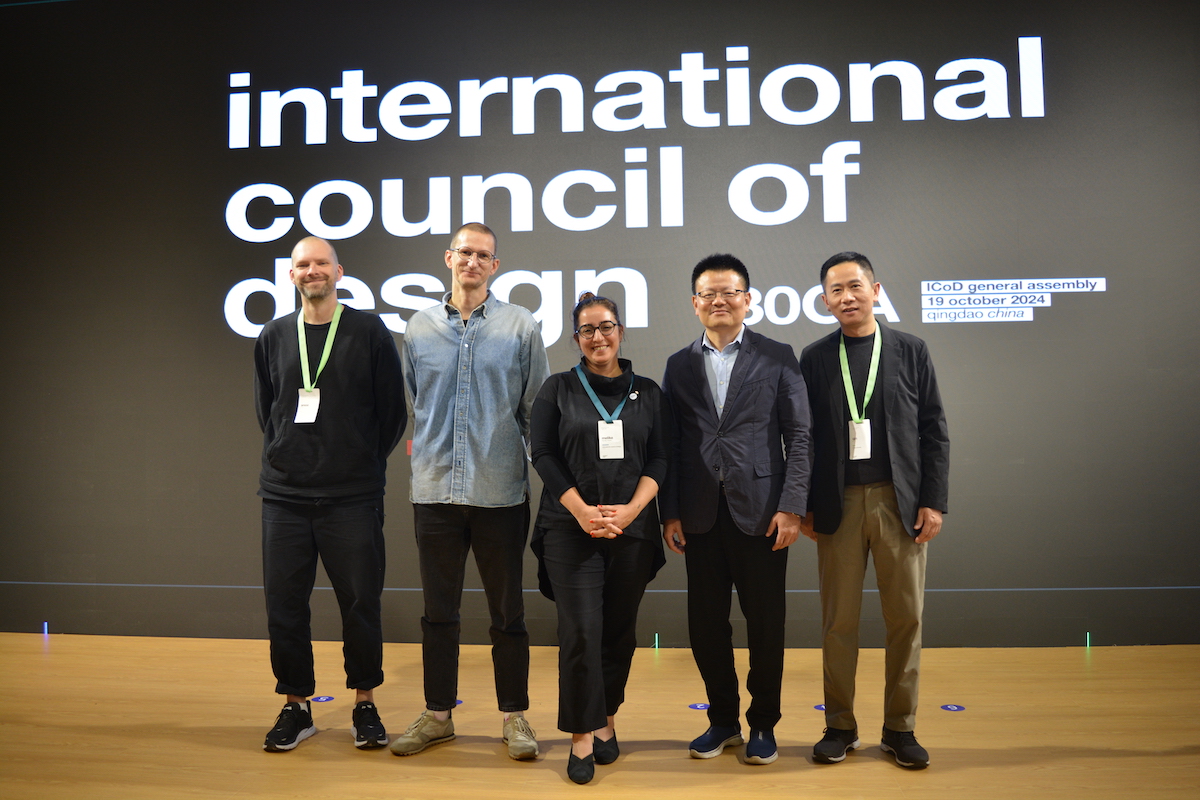
meet the 2024–2026 executive board
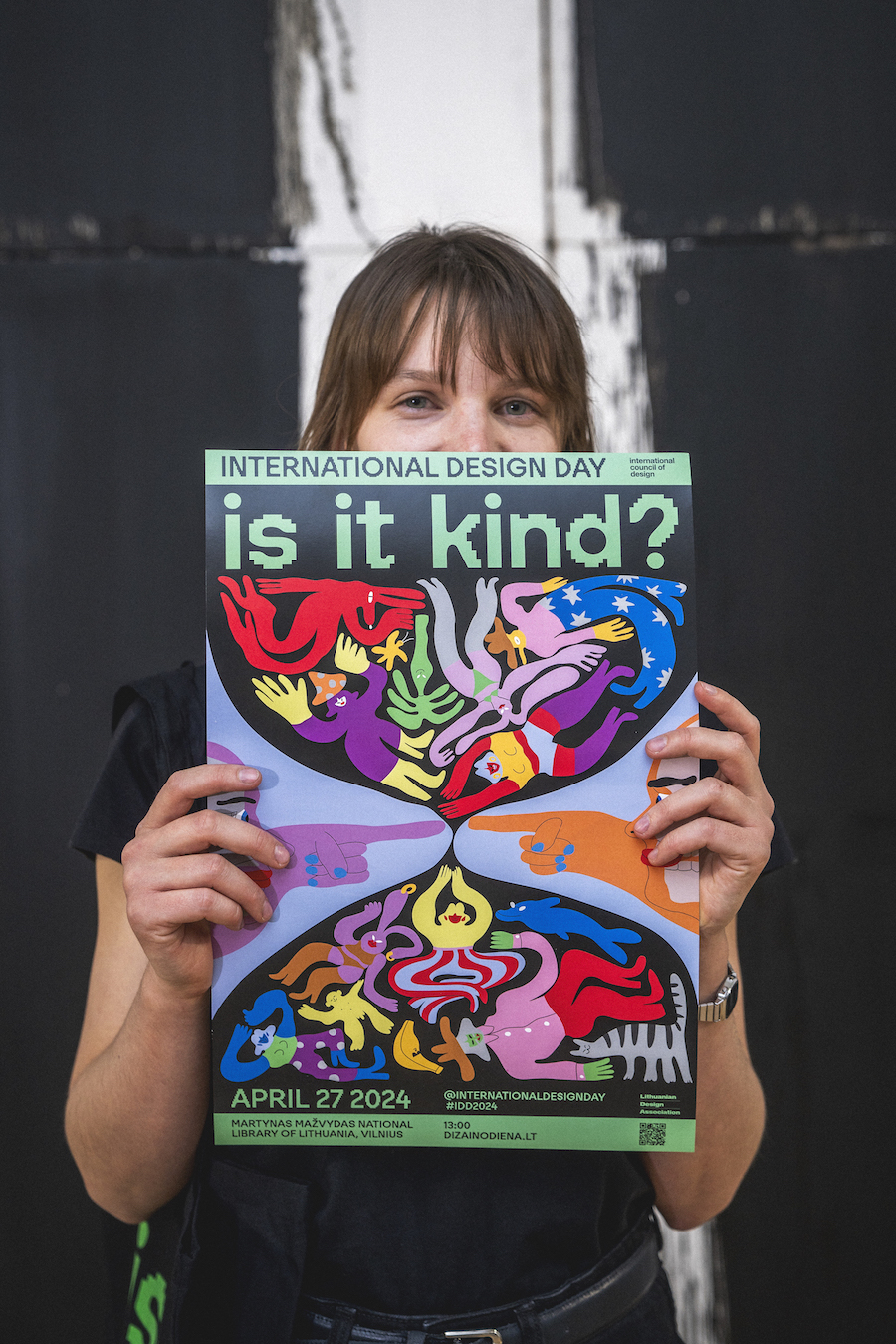
international design day 2024: is it kind? recap
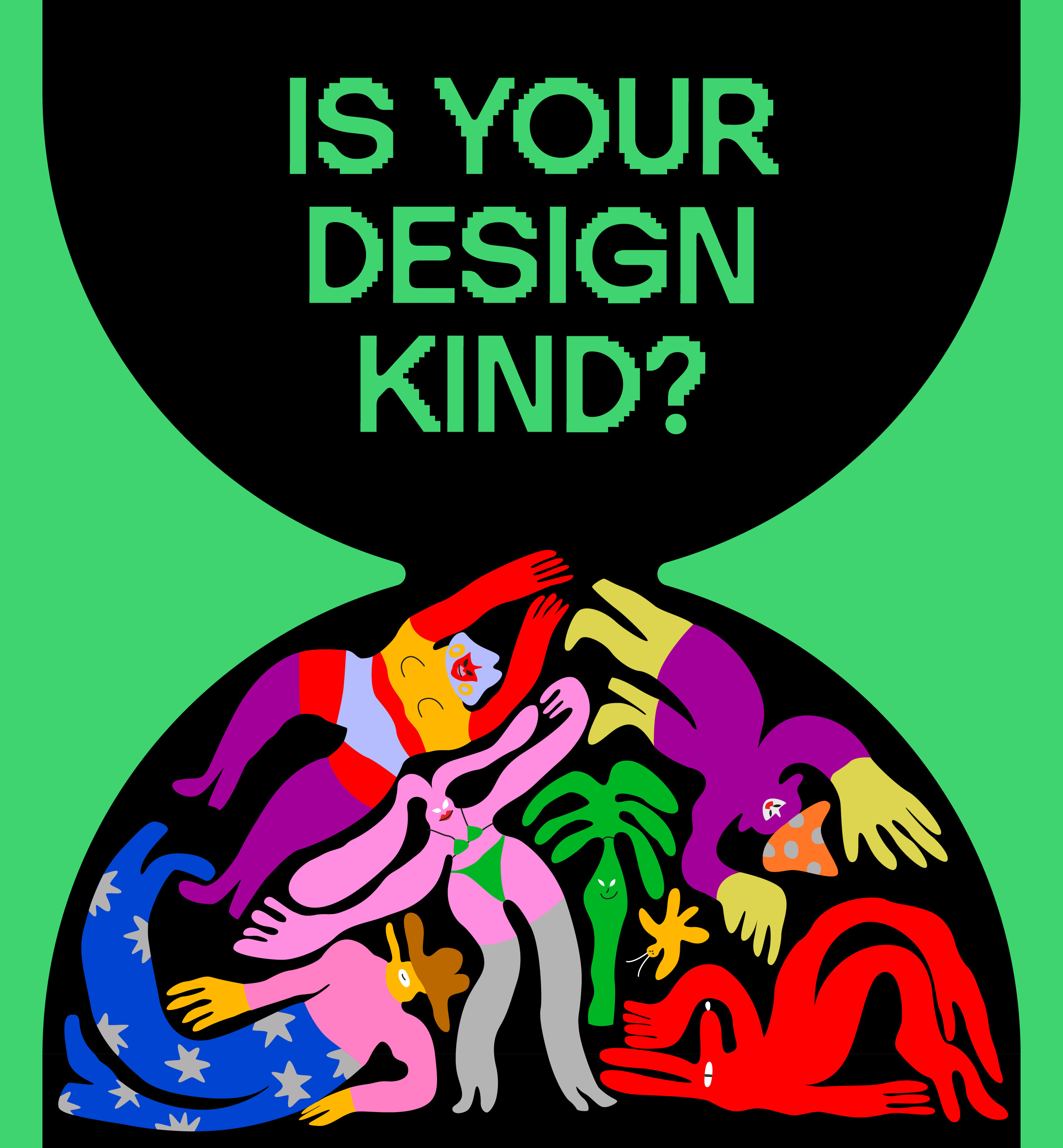
LDA forum + international design day 2024 conference
